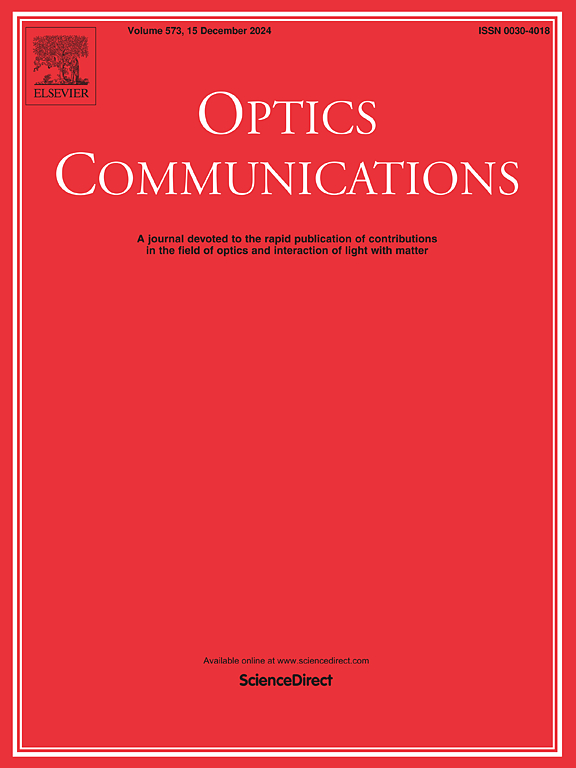Comprehensive and analytical investigation of topological interface states in one-dimensional photonic systems
IF 2.2
3区 物理与天体物理
Q2 OPTICS
引用次数: 0
Abstract
Topological interface states (TISs) have attracted considerable interest due to their exceptional impact on enhancing light-matter interactions in photonic systems. We investigate the TISs in a one-dimensional photonic heterostructure incorporating a cap layer. The behavior of TISs is examined using the transfer matrix method, varying the physical parameters of the cap layer. An analytical expression for TISs is derived using a direct matching approach based on the Kronig-Penney model. The analytical results acquired for TIS have been simulated across several configurations, and the outcomes indicate full consistency. Our findings indicate that TISs are highly sensitive to the thickness of the cap layer, exhibiting a periodic dependency on its variation. While the cap layer’s permittivity affects the position of TISs, its influence is weaker compared to that of the thickness. Additionally, we analyzed the impact of nonlinearity by adding a thin nonlinear layer at the interface and found that TISs are extremely responsive to the cap layer’s nonlinearity. These results could support the integration of TISs into future topological cavity and laser applications.
求助全文
约1分钟内获得全文
求助全文
来源期刊

Optics Communications
物理-光学
CiteScore
5.10
自引率
8.30%
发文量
681
审稿时长
38 days
期刊介绍:
Optics Communications invites original and timely contributions containing new results in various fields of optics and photonics. The journal considers theoretical and experimental research in areas ranging from the fundamental properties of light to technological applications. Topics covered include classical and quantum optics, optical physics and light-matter interactions, lasers, imaging, guided-wave optics and optical information processing. Manuscripts should offer clear evidence of novelty and significance. Papers concentrating on mathematical and computational issues, with limited connection to optics, are not suitable for publication in the Journal. Similarly, small technical advances, or papers concerned only with engineering applications or issues of materials science fall outside the journal scope.
 求助内容:
求助内容: 应助结果提醒方式:
应助结果提醒方式:


